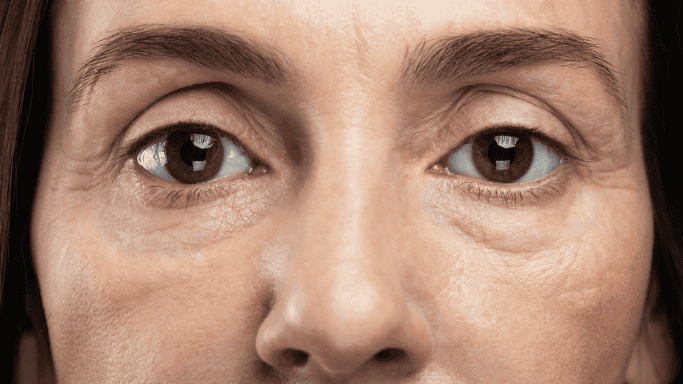
12 Hallmarks of Aging: What They Mean for Your Health
For decades, scientists puzzled over why our bodies change as we age.
Why do we lose energy? Why do multiple health problems seem to appear together? What’s really going on beneath the surface?
Today, aging research has answers. Researchers studying the biology of aging have identified twelve fundamental processes that contribute to aging. These are called the 12 proposed hallmarks of aging.
Understanding these molecular hallmarks changes everything. Instead of accepting decline as inevitable, you can see exactly what’s happening and what you can do about it.
In this guide, you’ll discover each aging hallmark and how it affects your daily life. More importantly, you’ll learn how to work with your body’s natural processes to support healthy aging on your own terms.
Key Takeaways
- Scientists have identified twelve basic biological processes that drive human aging, from DNA damage to energy production problems in your cells.
- These aging hallmarks work together like a chain reaction, where problems in one area often trigger issues in others, explaining why aging is associated with multiple body system changes at once.
- Learning about the different hallmarks can help you recognize what’s happening in your body as you age and make informed choices to support cellular health.
- Simple lifestyle changes that target multiple aging processes can be more effective than focusing on just one area.
What Are the Hallmarks of Aging?

Scientists have discovered that our bodies change as we get older because of a set of core biological processes that contribute to aging.
These are called hallmarks of aging.1 Think of them as the hidden processes that explain why we feel less energetic or heal more slowly as we age.
These aging hallmarks don’t operate in isolation. They work together in what scientists describe as a “vicious cycle” that amplifies cell aging dysfunction and accelerates organismal aging.
When one hallmark becomes problematic, it often triggers or worsens others, creating cascading effects throughout your body. This interconnected nature explains the complex effects of aging.
These aging processes cause the diseases we fear most. Heart disease, diabetes, aging and cancer, and Alzheimer’s all stem from these same underlying problems. That’s why targeting aging itself could prevent multiple age-related diseases at once.
The 12 Hallmarks Explained

Each hallmark represents a unique process, but together, they create the foundation for age-related changes you feel and see. Scientists often categorize these into primary hallmarks, antagonistic hallmarks, and integrative hallmarks based on their roles in organismal aging. Let’s break down what each one means for your health.
1. Genomic Instability
Your DNA is constantly under attack from both internal and external sources. From environmental toxins, radiation, and normal cellular processes. Over the decades, this damage accumulates faster than your repair systems can fix it.2
Think of it like small cracks appearing in a building’s foundation. Individually minor, but collectively compromising structural integrity. This instability can disrupt normal aging cell function and increase vulnerability to various health challenges.
2. Telomere Attrition
Telomeres act like protective plastic tips on shoelaces, but for your chromosomes. Each time your cells divide, these protective caps get shorter.3 Eventually, they become too short to protect your genetic material effectively.
This process limits how many times your cells can regenerate, directly affecting your body’s ability to repair and maintain tissues. Telomere length serves as an important biomarker of aging.
3. Epigenetic Alterations
Your genes are like a vast library, and epigenetic changes determine which books get read and when.4 As you age, the organizational system becomes less precise. Genes that should stay quiet become active, while beneficial genes get silenced.
These changes don’t alter your DNA sequence but dramatically affect how your cells function and respond to their environment. This represents one of the key molecular hallmarks associated with aging.
4. Loss of Proteostasis
Proteins are the workhorses of your cells, but they need constant quality control to function properly.5 Your cellular quality control systems become less efficient with age, allowing damaged or misfolded proteins to accumulate.
This breakdown is particularly evident in neurodegenerative conditions where protein clumps interfere with normal brain function. The loss of proteostasis shows a direct relation to aging and disease development.
5. Disabled Autophagy
Autophagy is your cells’ recycling program, breaking down damaged components and clearing cellular debris.6
When this system slows, waste products build up inside your cells like garbage accumulating in a city with reduced sanitation services. This accumulation creates cellular stress and interferes with normal function, contributing significantly to cell aging.
6. Deregulated Nutrient Sensing
Cells use nutrient-sensing pathways to manage energy and metabolism.7 Aging disrupts these pathways, which can affect weight, blood sugar, and overall metabolic health.
This deregulation plays a major role in aging and age-related diseases, particularly metabolic disorders.
7. Mitochondrial Dysfunction
Mitochondria generate the energy that powers virtually every cellular process in your body. As these cellular power plants become less efficient, you may notice decreased energy levels and reduced physical capacity.
Mitochondrial dysfunction represents one of the primary hallmarks that directly impacts how you feel day-to-day as you age.
8. Cellular Senescence
Some cells stop dividing but refuse to die, entering a zombie-like state called senescence.8 These cells release inflammatory signals that can damage neighboring healthy cells and tissues.
While cellular senescence initially evolved as protection against cancer, the accumulation of these aging cells with age contributes to chronic inflammation and tissue dysfunction.
9. Stem Cell Exhaustion
Stem cells are your body’s repair crew, capable of becoming whatever type of cell is needed for healing and maintenance.9
As their numbers decline and stem cell function diminishes with age, your regenerative capacity decreases. Stem cell exhaustion explains why injuries heal more slowly and why tissue maintenance becomes less efficient over time.
10. Altered Intercellular Communication
Cells need to “talk” to each other to keep your body running smoothly. Aging disrupts this intercellular communication, leading to poor coordination between different organs and systems.10
This breakdown affects everything from hormone regulation to immune responses, representing one of the integrative hallmarks that impacts multiple body systems.
11. Chronic Inflammation
Unlike the beneficial acute inflammation that helps heal injuries, chronic inflammation represents a persistent, low-level inflammatory state that develops with age.
This “inflammatory fire” damages healthy tissues and accelerates other aging processes, contributing to cardiovascular disease, metabolic disorders, and cognitive decline.11
12. Dysbiosis
Your gut microbiome—the trillions of bacteria living in your digestive system—changes significantly with age.
Beneficial bacteria decrease while potentially harmful species increase, disrupting the delicate balance that supports digestion, immunity, and even mood regulation through the gut-brain connection.12
How These Hallmarks Affect Your Health

These aging processes work like dominoes. When one starts failing, it knocks down others. Your cellular power plants slow down, so waste builds up. This triggers inflammation, which damages more cells. The cycle keeps repeating.
This domino effect explains why older adults often develop several health problems at once. The same underlying molecular hallmarks drive different diseases.
For example:
- Heart disease stems from chronic inflammation damaging blood vessels, plus cellular energy problems and faulty older cells causing tissue damage.13
- Brain diseases like Alzheimer’s involve DNA damage accumulating over time and problems clearing damaged proteins from brain cells.14
- Diabetes develops when your body can’t properly sense nutrients and manage blood sugar, made worse by inflammation and gut bacteria imbalances.15
Your aging pattern is unique. Some people struggle more with inflammation, others with energy production. Understanding your specific vulnerabilities helps you make smarter health choices as you age.
What You Can Do About Premature Aging

You can take action to prevent premature aging and slow aging processes. These twelve processes work together, which means targeting several at once can have powerful effects on aging and longevity.
Start with lifestyle basics.
- Exercise hits multiple aging targets at once. It boosts your cellular power plants, reduces inflammation, and helps your cells clean themselves up.
- Intermittent fasting works similarly. It activates your body’s cleanup systems and improves how your cells handle nutrients. These simple changes affect multiple aging processes simultaneously.
Plus, you don’t have to guess what’s happening in your body anymore.
At-home biomarker testing can reveal which aging processes are most active before you feel symptoms. These tests measure important biomarkers of aging that reveal your biological age versus your chronological age.
This lets you target your specific problem areas. Some people need more antioxidant support. Others benefit from inflammation control. Testing shows you exactly where to focus.
The right supplements can also support specific aging pathways. But they work best when guided by testing data. This approach moves beyond generic supplements to targeted solutions based on your unique needs.
Companies like Jinfiniti combine testing with personalized recommendations. They measure key aging markers and provide targeted strategies based on your individual results.
This represents the future of healthy aging. Instead of one-size-fits-all approaches, you get interventions designed around your unique aging pattern to promote hallmarks of health rather than just address aging problems.
Quick Recap

You now understand what’s really happening as your body ages. These twelve aging hallmarks aren’t mysterious anymore—they’re measurable and manageable.
The best part? You don’t have to tackle all different hallmarks at once. Small changes that target multiple pathways can create big improvements in how you feel and function.
Modern testing shows exactly which processes need attention in your body. This means no more guessing about what supplements to take or which lifestyle changes matter most for you.
Aging is inevitable, but how you age isn’t. With the right knowledge and tools, you can stay energetic and healthy for decades longer than previous generations.
Referenced Sources:
- https://pmc.ncbi.nlm.nih.gov/articles/PMC3836174/ ↩︎
- https://www.frontiersin.org/journals/aging/articles/10.3389/fragi.2024.1334261/full ↩︎
- https://pmc.ncbi.nlm.nih.gov/articles/PMC11882723/ ↩︎
- https://www.ncbi.nlm.nih.gov/books/NBK532999/ ↩︎
- https://www.alliedacademies.org/articles/mechanisms-of-protein-quality-control-in-cells-implications-for-neurodegenerative-diseases-31098.html. ↩︎
- https://pmc.ncbi.nlm.nih.gov/articles/PMC9329718/ ↩︎
- https://pmc.ncbi.nlm.nih.gov/articles/PMC5440210/ ↩︎
- https://pmc.ncbi.nlm.nih.gov/articles/PMC10813254/ ↩︎
- https://pmc.ncbi.nlm.nih.gov/articles/PMC4084617/ ↩︎
- https://www.sciencedirect.com/topics/biochemistry-genetics-and-molecular-biology/cell-aging ↩︎
- https://www.researchgate.net/publication/318550661_Limiting_inflammation_-_The_negative_regulation_of_NF-B_and_the_NLRP3_inflammasome ↩︎
- https://www.sciencedirect.com/science/article/pii/S0753332223007758 ↩︎
- https://pubmed.ncbi.nlm.nih.gov/38391966/ ↩︎
- https://pmc.ncbi.nlm.nih.gov/articles/PMC10652403/ ↩︎
- https://www.frontiersin.org/journals/cellular-and-infection-microbiology/articles/10.3389/fcimb.2022.834485/full ↩︎











